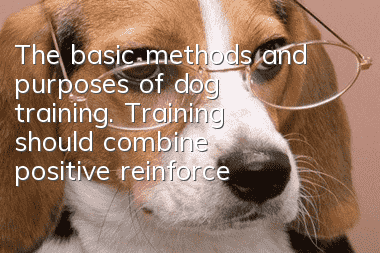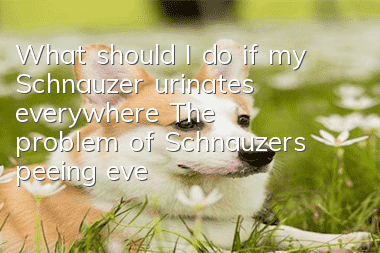The basic methods and purposes of dog training. Training should combine positive reinforcement and negative reinforcement.

Positive reinforcement
If you help a friend and are praised by your friend, you will be more willing to help your friend in the future. This kind of praise is called "positive reinforcement"! If you give your dog a snack every time he sits down, he will sit down obediently in the future; this method of giving him snacks is positive reinforcement.
In terms of behavioral controls, the word "正" does not mean "good", but "plus", and "strengthening" means that a certain behavior will be repeated. So, positive reinforcement is to add something to make the behavior repeat and increase. It’s not difficult to understand!
For example, when your dog barks, you scold it. You feel that you are "punishing" it, but in contrast, you also give the dog the greatest attention, and what the dog is most afraid of is It's not that you scold it, but you ignore it, so you add "attention", causing the "barking behavior" to repeat and increase. Therefore, punishing your dog for barking behavior is useless.
Negative reinforcement
Driving friends must know that if you don’t fasten your seat belt, the car will keep making a warning sound, which makes you uncomfortable to hear, so fasten your seat belt. In other words, in order to remove the unpleasant warning sound, you put on your seat belt. Over time, you don't want to hear the warning sound, so you put on your seat belt as soon as you get in the car.
Continuing the above concept, "negative" does not mean "bad", but "removal", that is, by removing something, the behavior will be repeated and increased. So, "removing" a bad feeling to increase the behavior of "putting on a seat belt" is negative reinforcement.
The same goes for getting along with dogs. Suppose that every time you come home, your dog will lie down and urinate excitedly when he sees you coming back. Then you just need to go home and when you see the dog trying to lie down, don't interact with it, ignore it and leave. If the dog finds you gone, it will stand up and chase you. Treat it like this repeatedly, and within a few days, it will be less likely to leak excitedly when you come home.
Why? Because the dog wants to be close to its owner, in order to prevent it from urinating when excited, as long as the "attention and interaction" it wants is "removed", the dog will increase its "unexcited" behavior without attention and interaction. , this is negative reinforcement (without attention and interaction, the dog will not be excited; without excitement, the dog will not be motivated by excitement)Excited and leaking urine. So, ignoring your dog will prevent him from leaking urine when excited).
Give another typical example. When early trainers trained dogs, they would use P-chains to pull the dogs. As long as the dogs were not walking against the trainers, they would pull on the chains. In order to avoid being pulled, the dogs would walk next to the trainers. This is It's negative reinforcement; that is, "removing" something the dog doesn't want "being pulled", allowing a behavior to be repeated and increasing "walking beside the trainer".
Training a dog to “follow”
But if you use positive reinforcement to teach a dog, it’s completely different! In order to train the dog to walk beside the trainer, it doesn’t matter which way the dog walks during the walk, but as long as it is close to the trainer, reward the dog. In this way, the dog will repeat it because of positive reinforcement. and increase the behavior of walking beside the trainer. Are the training results of the two the same? no the same! The teaching method of negative reinforcement makes the dog feel that the trainer's side is a "safe zone" and other places are "danger zones". The dog is "trembling" when walking next to the trainer.
The strengthened teaching method makes the dog feel that the trainer's side is a happy zone, and other places are "meaningless zones". A dog is "happy" walking beside its trainer. Assume you are a dog, do you want positive reinforcement or negative reinforcement?
- How does a novice train a pet dog? How to train a pet dog!
- What are the symptoms of a cold in dogs?
- How to tell the difference between a Maltese and a Shih Tzu? What's the difference between them?
- How to train a dog not to eat randomly outside? How to train dogs to pick up food
- What are the key points for raising Mastiff dogs?
- How to train Russian Shepherd Dog
- With good training, the dog will not reject it and have more freedom in life!
- Common reproductive system diseases in dogs
- What injections do dogs get once a year?
- What are the early symptoms of pancreatitis in dogs?



